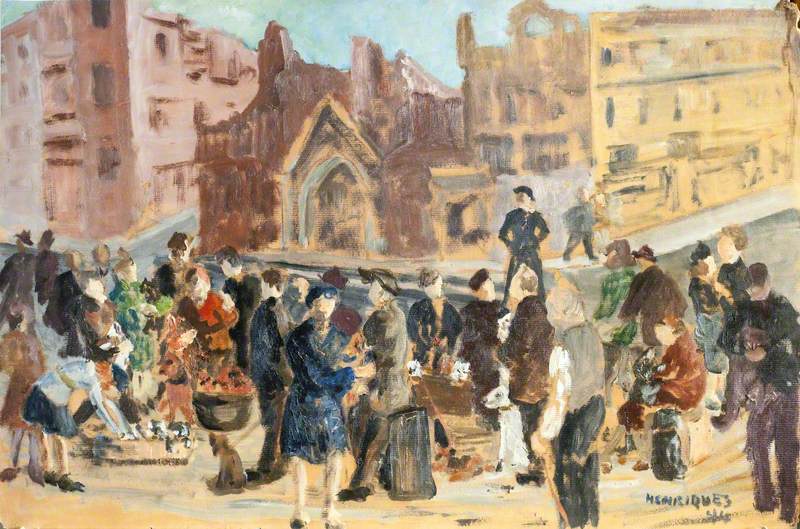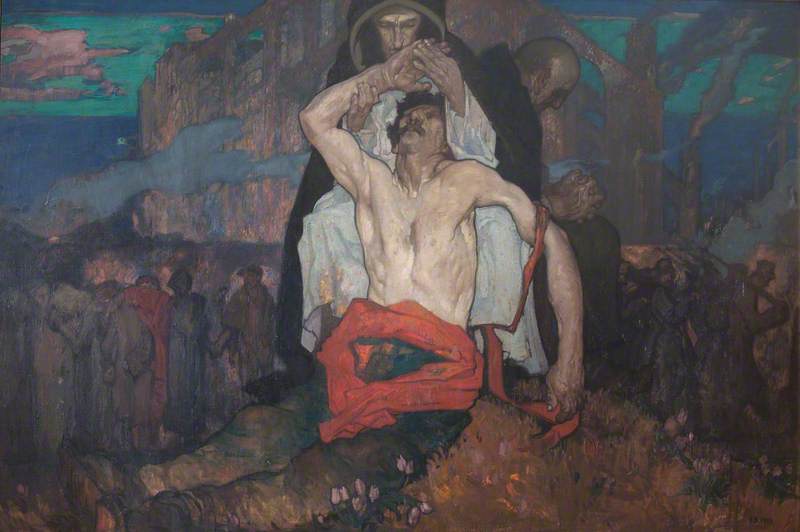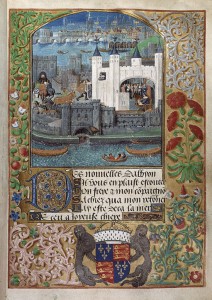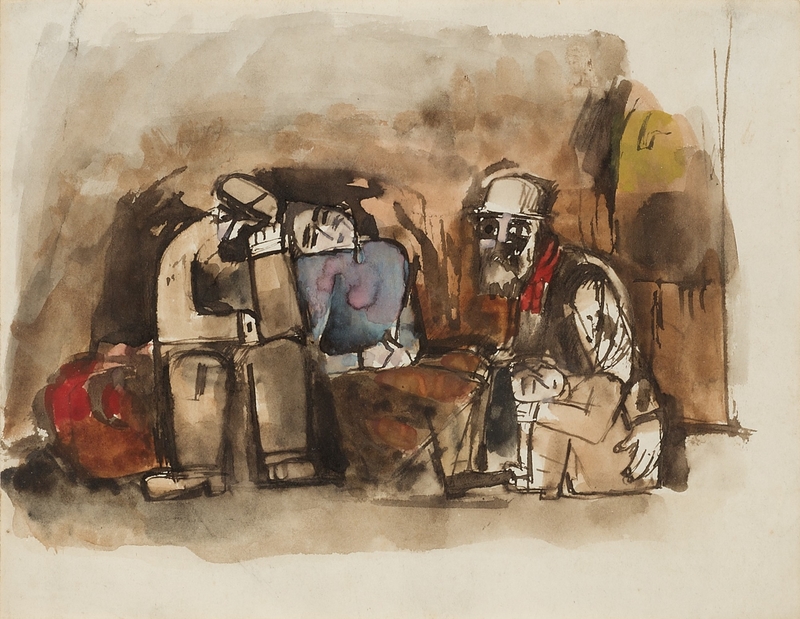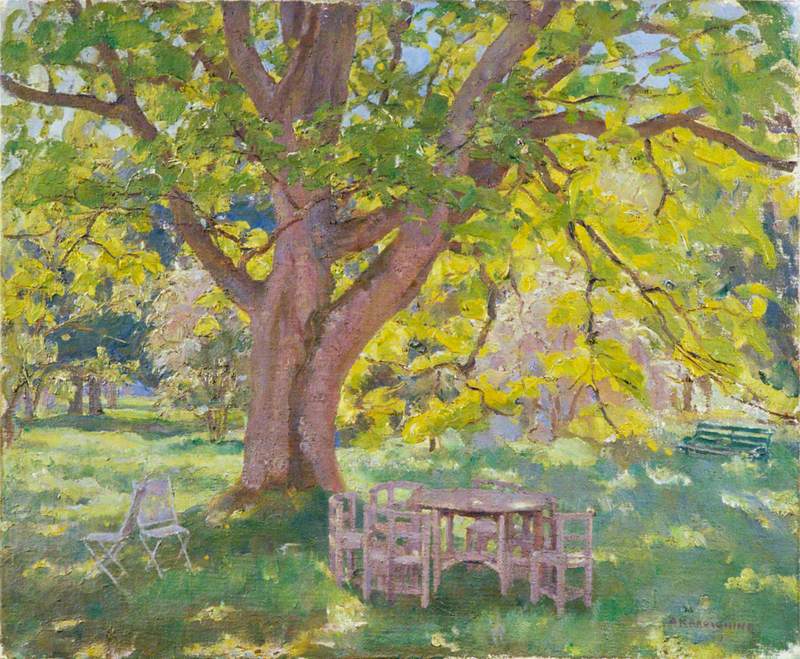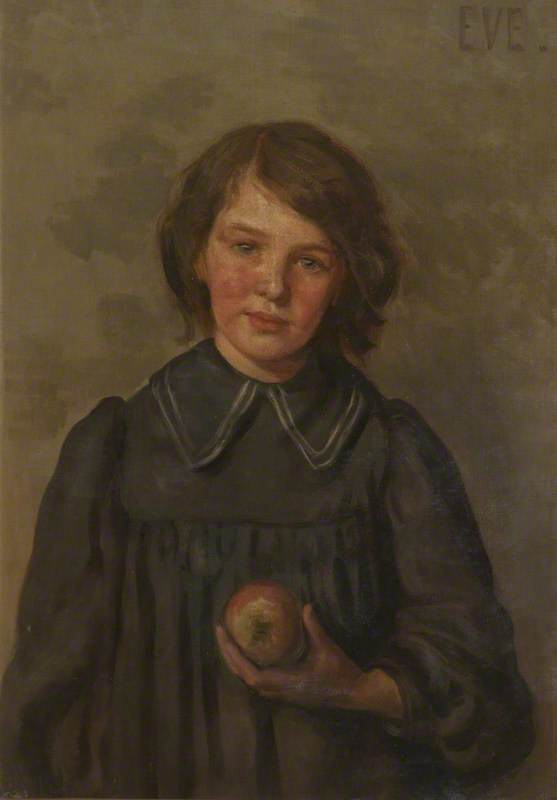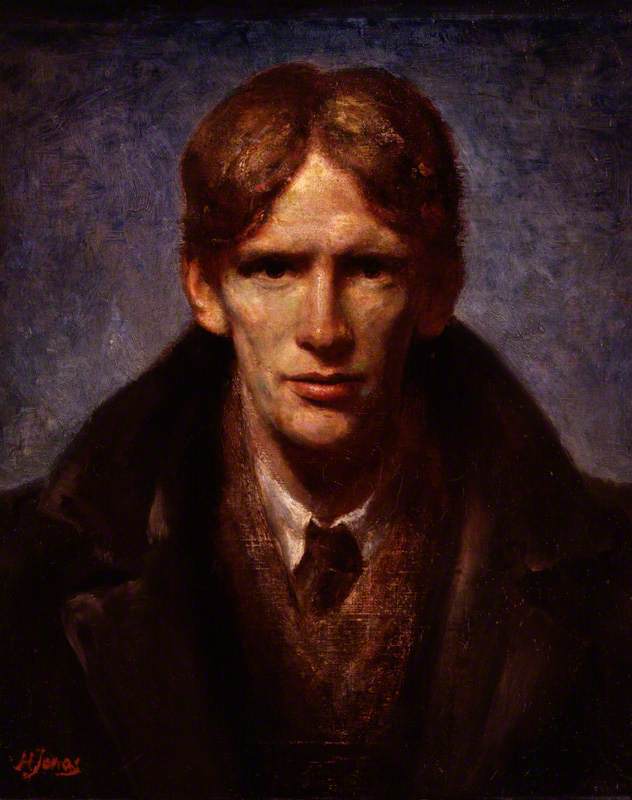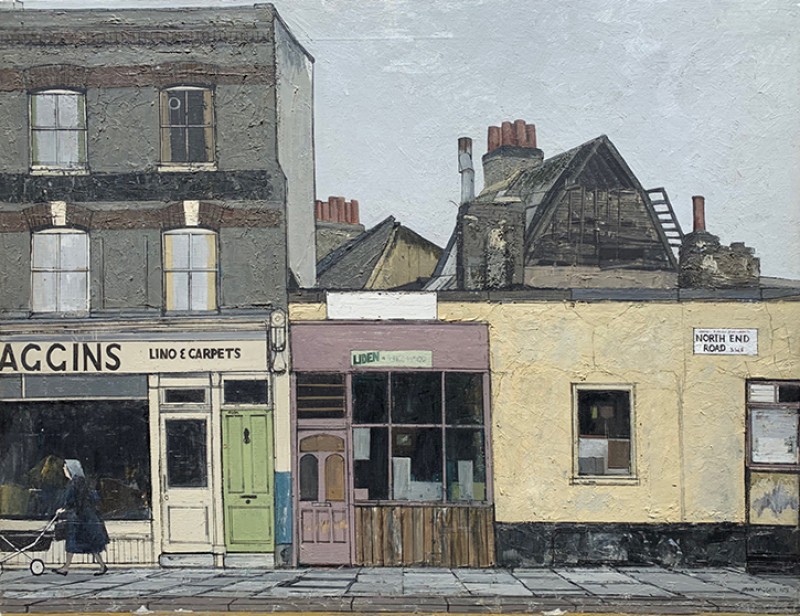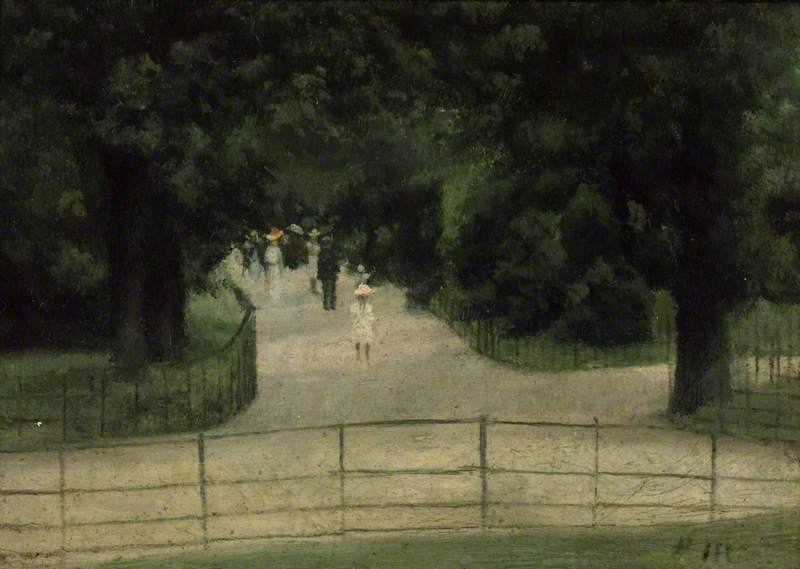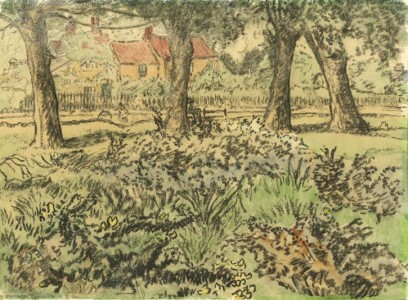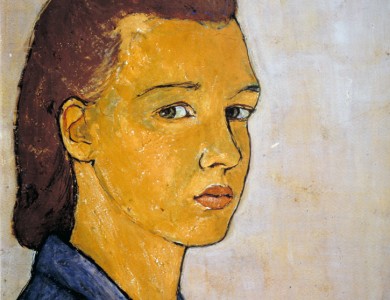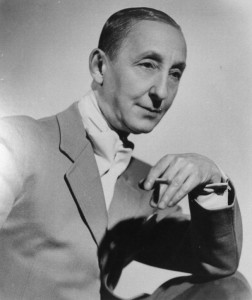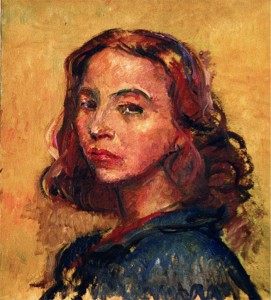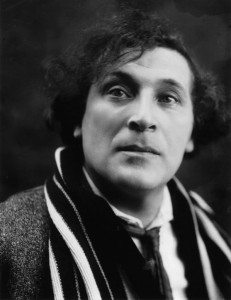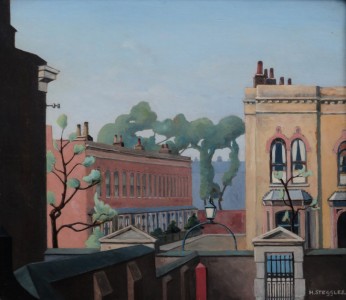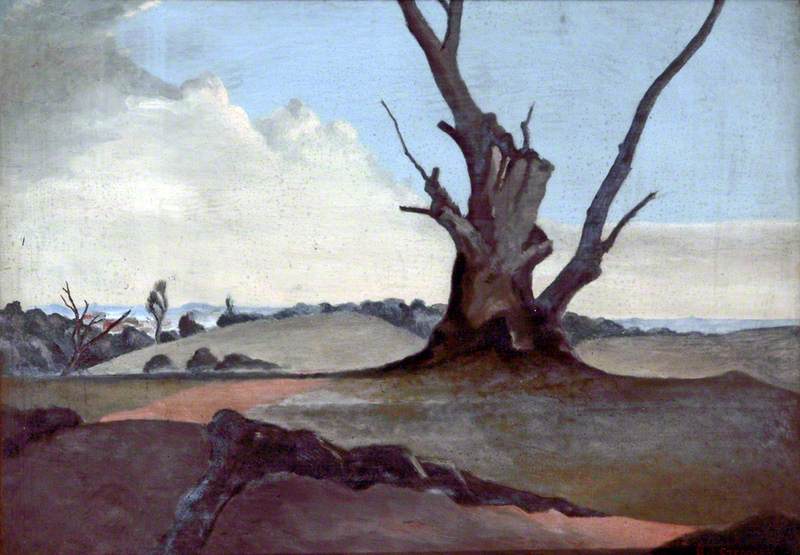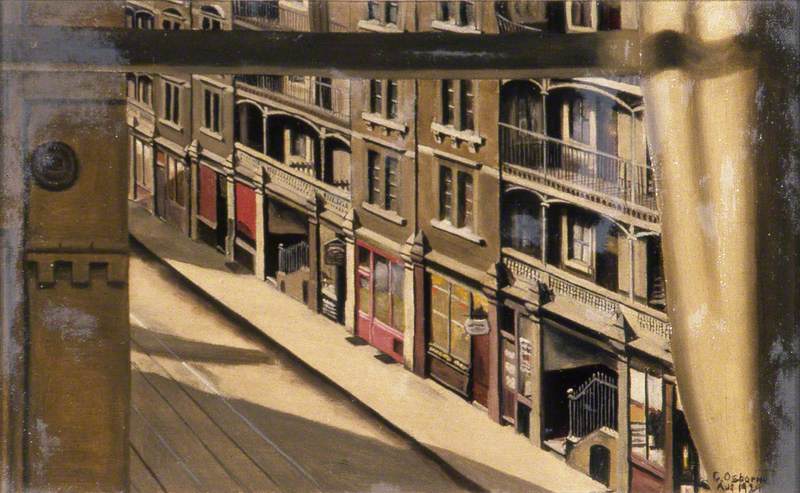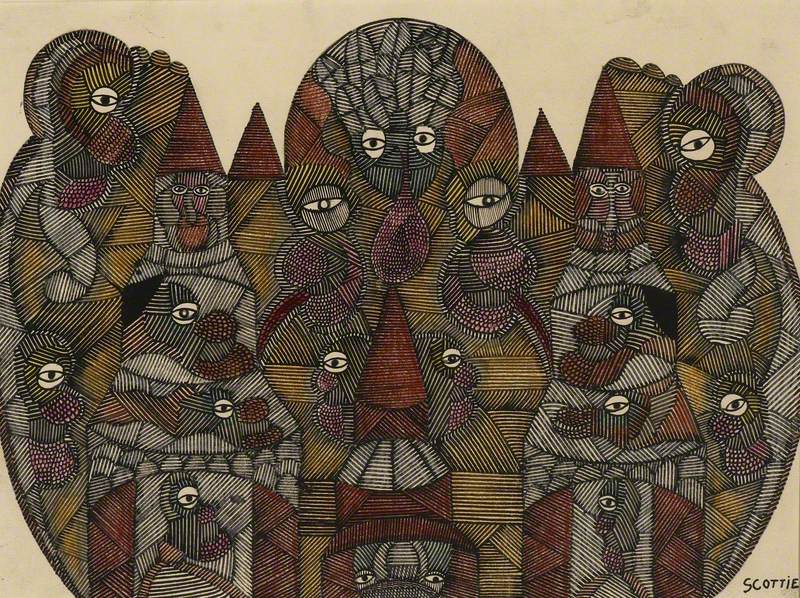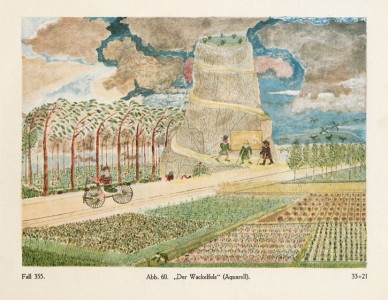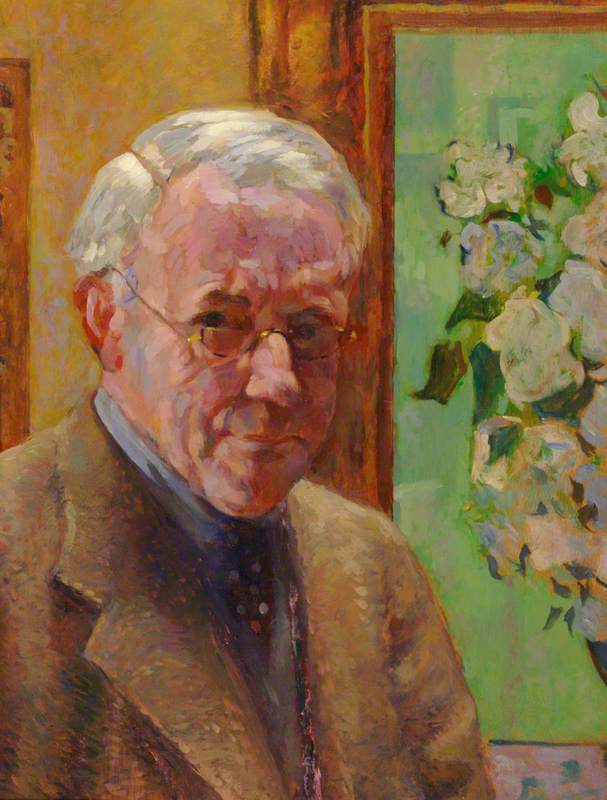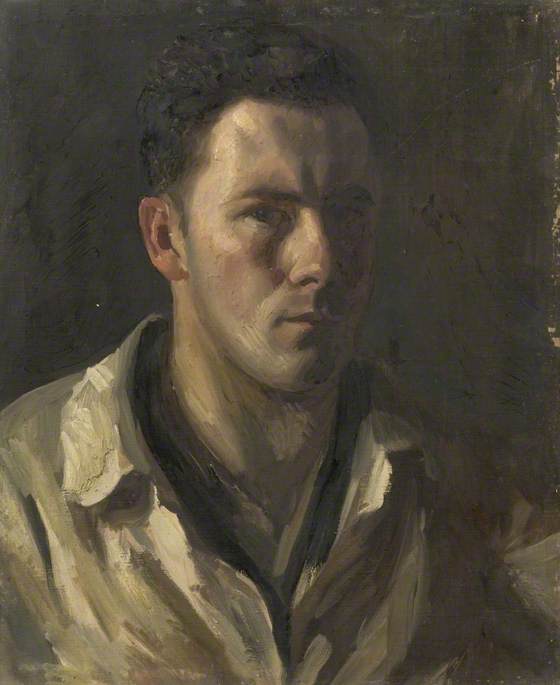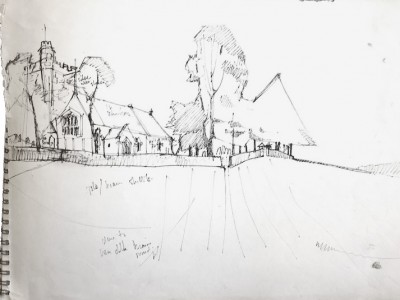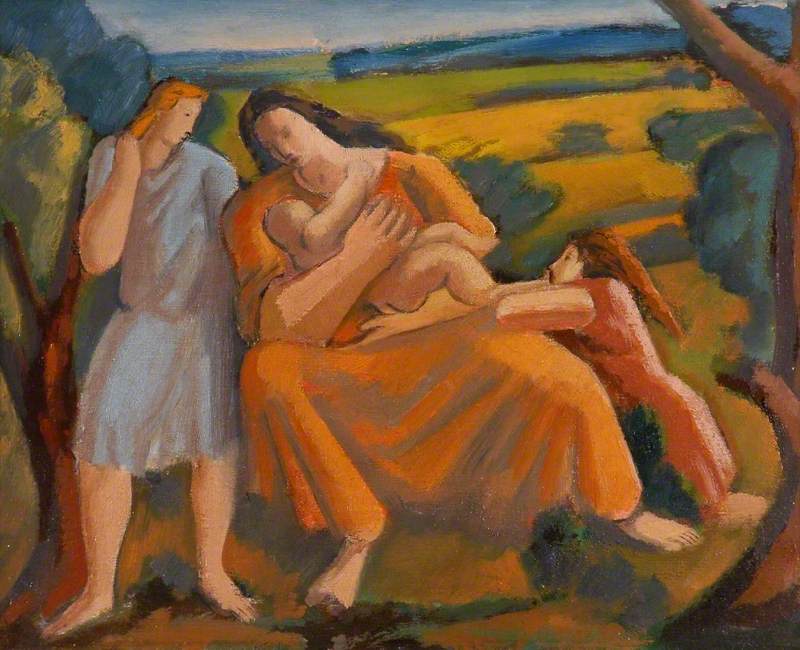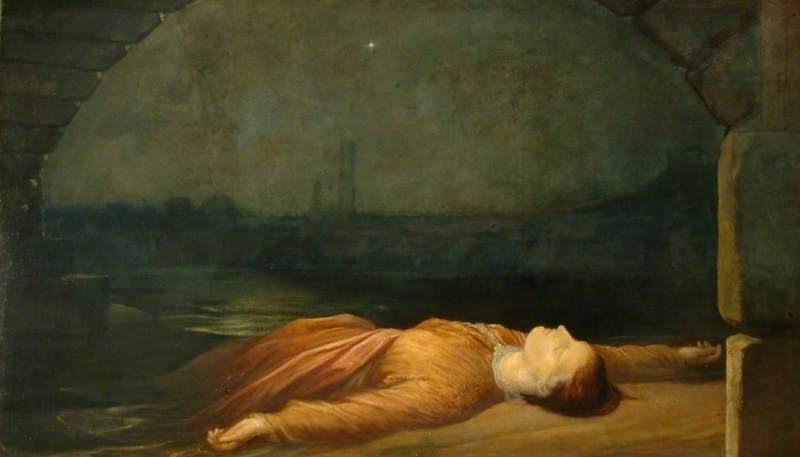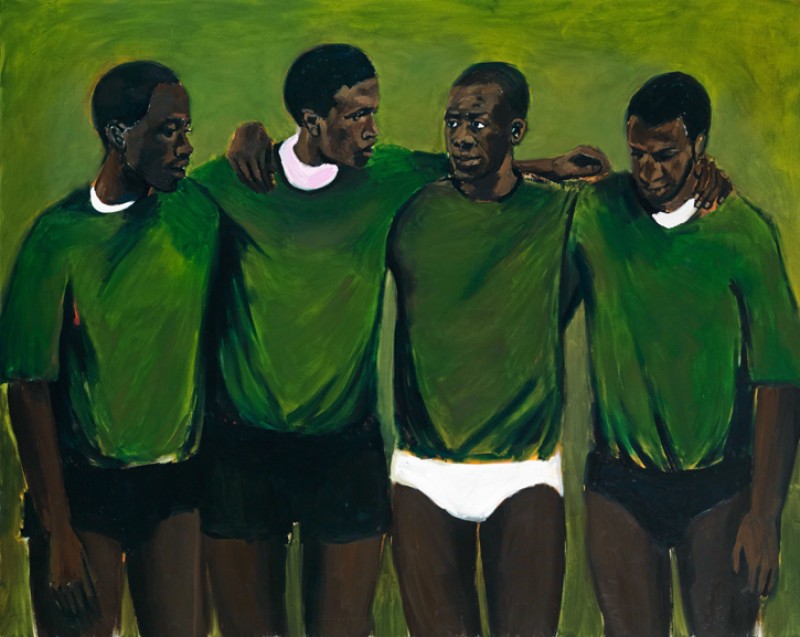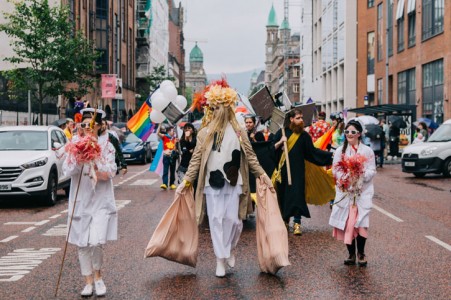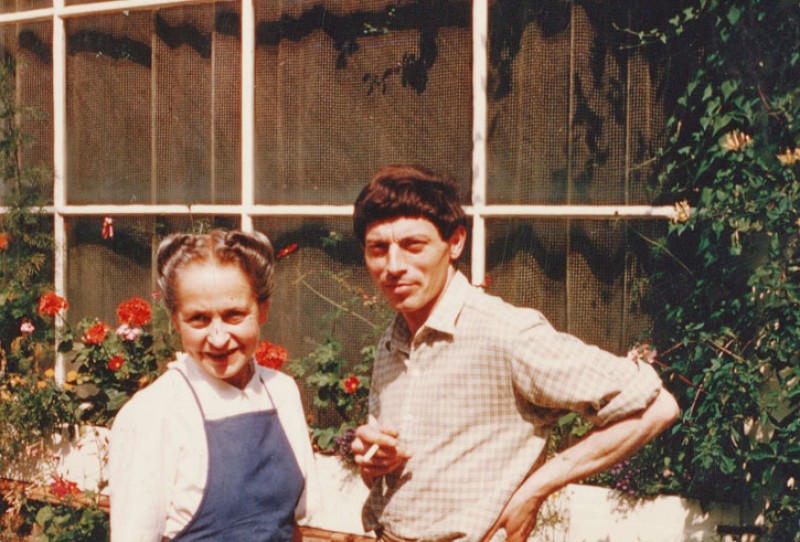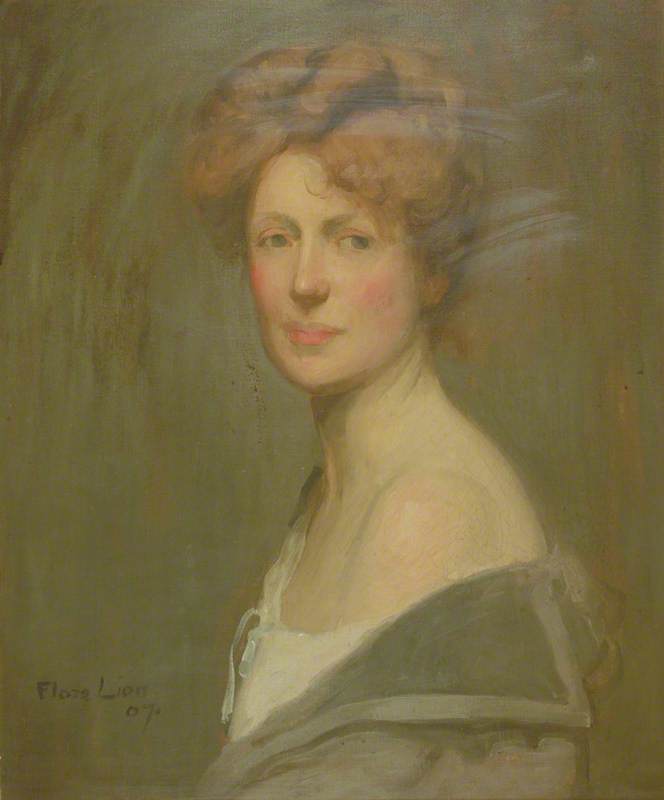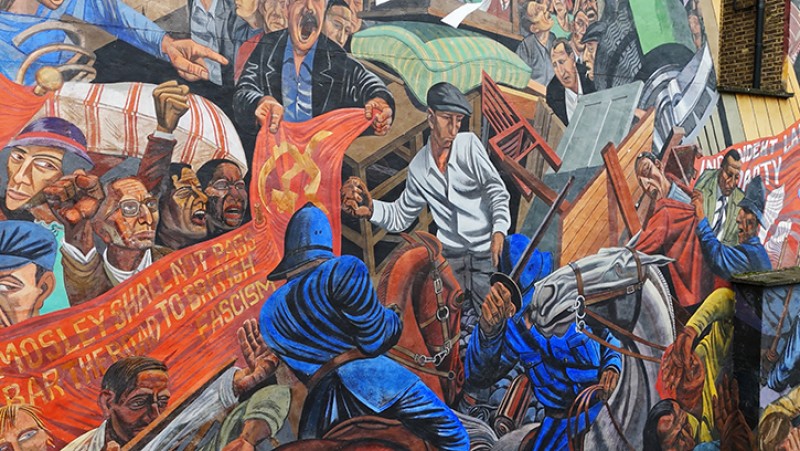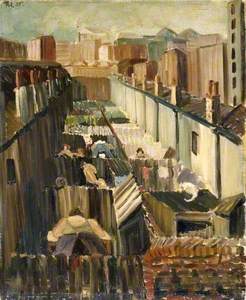Though better known as a philanthropist and social activist, long-time East End resident Rose Henriques was also a painter, and the sketches she made of Stepney during the Second World War provide a unique and significant document of the War's impact on one small patch of London.
As a painter, Henriques was self-taught and prolific, working rapidly in inks, watercolour, charcoal and oils, on paper, board and canvas, signing her works in her married name. Illustrative in style and varying in quality, her sketches show attentiveness to amusing detail and have a lively, naïve charm, reflecting her own seemingly inexhaustible energy. At their best, her works are reminiscent of some of her near contemporaries such as Edward Ardizzone (1900–1979), and Walter Sickert (1860–1942), who may have had an influence on her style.
Hessel Street: Sabbath Cakes to the Baker
mid-20th C
Rose Henriques (1889–1972) 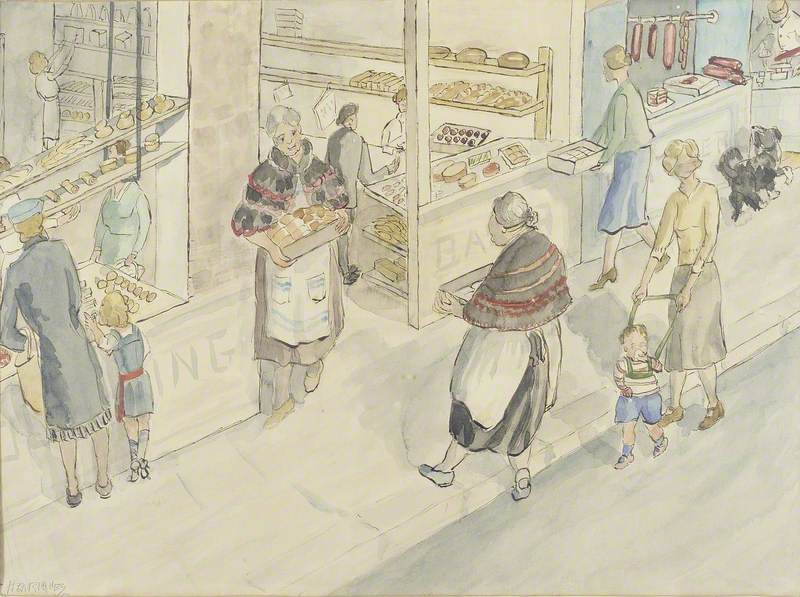
The artist was born Rose Louise Loewe in Stoke Newington, London, on 17th August 1889, to Orthodox Jewish parents James Henry Loewe, a bankers agent from Brighton, and Emma, née Immerwahr, from Beuthen in Upper Silesia. At age 16, Rose was sent to live with aunts in Breslau (now Wrocław, in Poland) where she studied piano, became fluent in German, and acquired a life-long love of Wagner.
During the First World War, Rose Loewe served as a VAD nurse, based at Liverpool Street Station. Around this time she met Basil Henriques (1890–1961), a Jewish reformist from a prominent Sephardic family. In March 1914 Basil founded The Oxford and St George Jewish Boys' Club in rented rooms at 125 Cannon Street Road, in the heart of Stepney's Jewish quarter, for the benefit of underprivileged local boys. Rose soon began helping out at the club, established a parallel club for Jewish girls in 1915 and the following year the couple married, in a ceremony at the Liberal Jewish Synagogue in St John's Wood.
After the war, the Henriques set up the St George's Jewish Settlement in Betts Street, which in 1929 relocated to Berner Street (now Henriques Street), just off the Commercial Road, and renamed Bernhard Baron St George's Jewish Settlement after the philanthropist who funded the building's purchase. Around this time, Rose began making lively sketches of everyday life in and around the cramped backstreets of the Settlement, such as La toilette, (1930), and Coronation in Challis Court (1937), celebrating the investiture of the new king, George VI.
Coronation in Challis Court
1937
Rose Henriques (1889–1972) 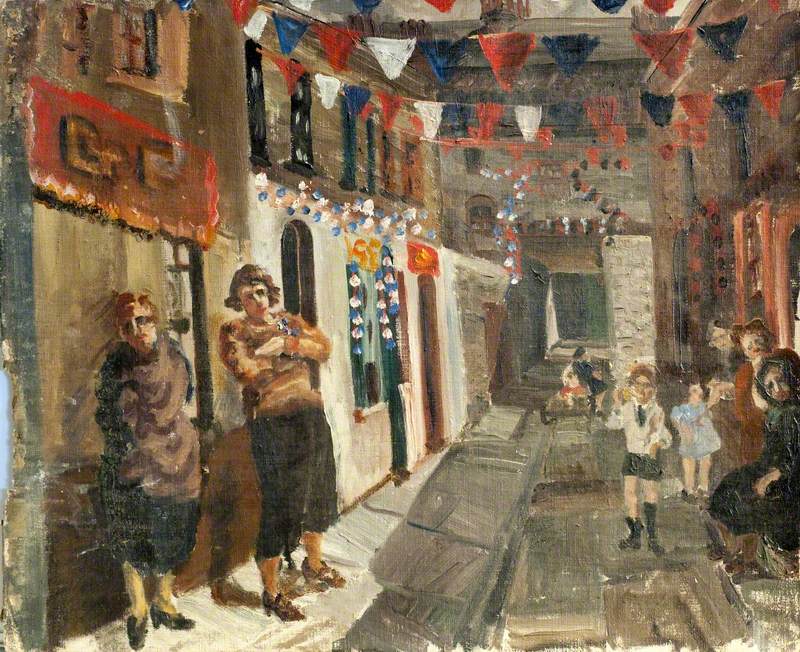
During the Second World War, she volunteered as an ambulance officer and later air raid warden, and began recording incidents in her local area, as sketches snatched on the streets during her busy shifts, or from memory, working them up late into the night, after her duties had ended. These lively scenes include civil defence provisions, night shelters, bomb damage (sometimes viewed from the roof of the Settlement building), and the much-lauded 'Cockney spirit' of the local residents. From 1934 onwards she regularly participated in the Whitechapel Art Gallery's East End Academy, an annual exhibition open to amateurs (primarily) from Aldgate and beyond.
In 1940, perhaps hoping for employment as a war artist, Henriques submitted two watercolours to the War Artists' Advisory Committee (WAAC). These were declined, unfortunately (as were later submissions), but the WAAC subsequently purchased one, Shelter Entrance (1941), one of several she made of the notorious Tilbury shelter, from an exhibition of Civil Defence Artists held at the Bernhard Baron Settlement in 1942.
In 1943 Rose Henriques joined the Jewish Committee for Relief Abroad, providing assistance for survivors of the concentration camps, in her spare time sketching scenes in and around the camps – in particular, at Bergen-Belsen, liberated in April 1945. Henriques was a tireless campaigner for numerous welfare organisations and schemes such as the ORT (Society for Spreading Artisan and Agricultural Work among Jews), the League of Jewish Women, the Association for the Welfare of the Physically Handicapped, Workrooms for the Elderly (a scheme to combat isolation), and as Treasurer of the Whitechapel Art Gallery.
Workrooms for the Elderly, East London
c.1954
Rose Henriques (1889–1972) 
In the post-war period, Henriques held two solo exhibitions at the Whitechapel Gallery: 'Stepney in War & Peace' (June 1947), showing some 168 paintings and sketches of war-ravaged East London, and 'Vanishing Stepney' (March 1961), which, like the paintings of fellow artist Nöel Gibson (1928–2005), captured scenes of an East End being demolished all too rapidly.
Recognising their documentary value, Rose Henriques offered the 'War & Peace' artworks in their entirety to the local council who – financially overburdened after the district's wartime devastation – declined. Instead, the Museum of London purchased five paintings, and the remainder were bought by the Pilgrim Trust; many of these later entered the collection of Tower Hamlets Local History Library & Archive, which now owns more than 100 of Henriques' works.
Enquiries, Hooper Street V1 Incident
c.1944
Rose Henriques (1889–1972) 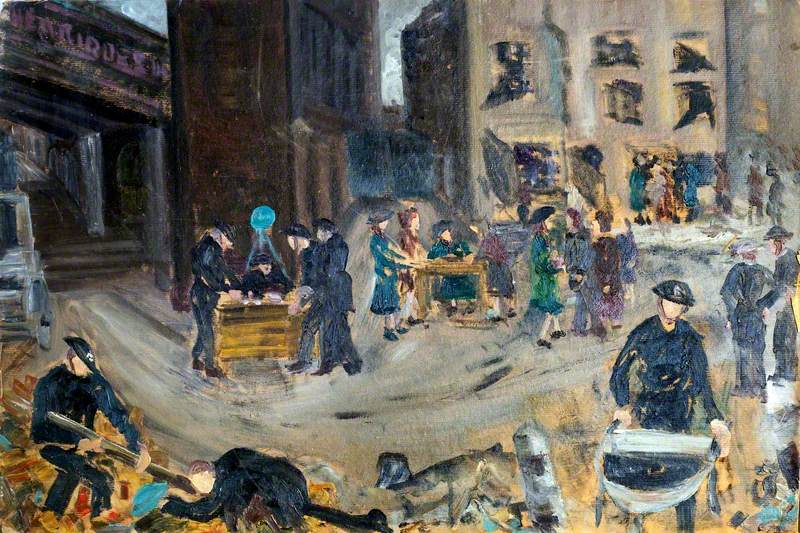
The Henriques remained living 'above the shop' at Berner Street, engaged in their philanthropic work, for the duration of their lives. In 1955, Basil Henriques was knighted. Nine years later, Rose, now Lady Henriques, received the Henrietta Szold Award (first awarded to Eleanor Roosevelt) in recognition of her services to the Jewish people and, in 1971, a CBE for services to the community of East London. She died in 1972 and was buried in Golders Green cemetery.
Sara Ayad, independent art researcher

